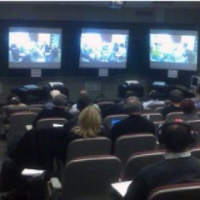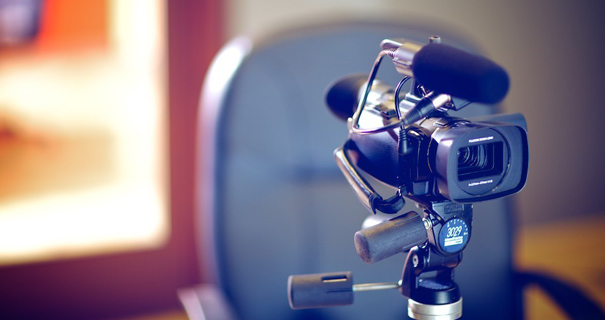How Trial Presentations Are Vital for Effective Cross-Examination in Court
The Power of Visuals in Test Presentations for a Winning Argument
The assimilation of visuals in trial presentations has actually arised as an essential variable in efficiently communicating complex disagreements to jurors. By using different kinds of visual aids-- be it diagrams, photographs, or computer animations-- lawyers can enhance understanding and retention, inevitably shaping the court's perception of the situation. This approach not only makes clear detailed stories but additionally establishes a psychological vibration that can affect decision-making. As we check out the subtleties of this technique, it becomes vital to consider how particular sorts of visuals can make a considerable distinction in trial outcomes. What sensible approaches might attorneys employ to maximize this potential?
Significance of Visuals in Tests
In numerous legal setups, visuals play a vital function in improving the effectiveness of trial discussions. The combination of aesthetic components can substantially affect jurors' understanding and retention of intricate information, thereby forming their assumptions and choices. Visuals, such as graphes, diagrams, and pictures, can simplify detailed narratives, making them extra available and engaging.
Furthermore, the human mind processes visual info much more efficiently than text, which emphasizes the relevance of including visuals into legal disagreements. By translating dense lawful concepts into visual formats, lawyers can assist in more clear communication, making sure that essential points are not overlooked during tests.
Furthermore, visuals offer to engage jurors on a psychological level, cultivating a connection to the instance that words alone may fall short to achieve. The critical use of visuals can stimulate empathy, triggering jurors to consider the human elements of the instance.
Ultimately, the value of visuals in trials lies in their capacity to enhance clearness, boost juror engagement, and strengthen the story being provided. This powerful mix is vital for crafting influential arguments that resonate with jurors and affect the end result of legal procedures.
Kinds of Visuals to Make Use Of
Effective trial presentations can substantially gain from a range of visual devices that deal with various aspects of the case. trial presentations. Using layouts and graphes can effectively break down complicated info, making it a lot more absorbable for jurors. Flowcharts can illustrate the sequence of events, while bar charts may succinctly compare appropriate data points.

Animations and simulations can likewise play an essential function, especially in situations entailing technical data or complex circumstances. These visuals can dynamically represent processes or activities, giving clarity and engagement that static pictures might not attain.
Moreover, infographics incorporate message and visuals to sum up crucial information efficiently. They can present timelines, statistics, and significant case points in an aesthetically enticing fashion, making it less complicated for jurors to adhere to the debate.
Enhancing Understanding and Retention

Enhancing comprehension and retention throughout test presentations is essential for ensuring that jurors realize the crucial components of a situation. Visual help act as powerful devices hereof, translating intricate info into conveniently absorbable formats. By making use of charts, diagrams, and infographics, lawyers can simplify detailed information and highlight vital points that might otherwise be overlooked.
Researches have revealed that individuals preserve info significantly much better when it is presented aesthetically. This is particularly pertinent in a test setup, where jurors may be bewildered by the volume of proof and testimony. By purposefully incorporating visuals, lawyers can direct jurors' interest to one of the most vital aspects of the situation, enhancing their understanding and memory of the material offered.

Creating Involving Discussions
Fascinating jurors' attention during test presentations is crucial for communicating a compelling narrative. Involving presentations utilize visual aspects to create an unforgettable experience that reverberates with jurors. The tactical use graphics, animations, and video clips can clarify complicated details, making it more obtainable and relatable.

Furthermore, incorporating narration techniques can improve engagement. Providing evidence in a rational series that develops sob story enables jurors to get in touch with the material on an individual level. Diverse discussion formats, such as including short video clips or interactive components, can also endure interest and interest throughout the test.
Ultimately, an appealing discussion promotes a much more extensive understanding of the instance, enabling jurors to much better value the arguments existing and leading to a much more positive outcome.
Case Research Studies and Success Stories
Countless study highlight the substantial influence of visuals in trial presentations, demonstrating their capability to affect juror perceptions and ultimately the results of situations. For instance, a notable case involving a personal injury insurance claim highlighted just how using a 3D computer animation of the accident scene clarified complex details. Jurors reported really feeling even more enlightened and understanding, dramatically guiding their choice in support of the website here complainant.
In one more instance, a business litigation case utilized infographics to existing economic information and timelines, making complex info easily accessible. The graph enabled jurors to grasp the subtleties of the instance a lot more successfully than verbal explanations alone. trial presentations. Therefore, the court returned a decision that exceeded the client's assumptions
The compelling visuals not just helped in developing question yet likewise resonated psychologically with jurors, leading to an acquittal. These success tales underscore the need of integrating visuals right into trial discussions, as they enhance understanding, retention, and eventually, the persuasive power of legal debates.
Final Thought
In conclusion, the tactical consolidation of visuals in test discussions significantly enhances jurors' comprehension and retention of complicated info. Involving discussions, sustained by engaging case studies, demonstrate the profound impact that visuals can have on convincing interaction.